On completion of the manufacturing and testing of the generator, the OEM puts up the generator label and data tags(also known as a generator nameplate) on the generator.
Let us take a quick look at the various types of Generator Labels and Data Tags, and understand what each one of them means –
Table of Contents
Information Tags
As the name suggests, these tags carry information about the engine and the generator, which may come in handy during regular repair and maintenance of the machine, or obtaining its replacement parts.
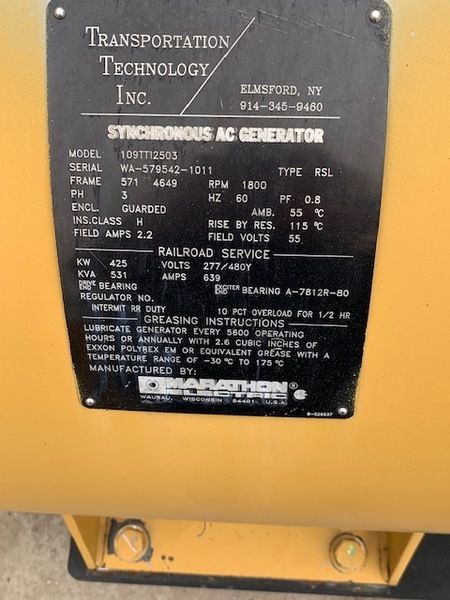
Alert Labels
These are essentially caution marks and are often found in yellow color. These need the due attention of the technician when any maintenance work is undertaken.
Cautioning/Danger Labels
Also known as Warning Labels, these are often found in red color. When the directions on these labels are not closely followed, there may be chances of harm to the equipment or the personnel.
Let us understand each of these tags in greater detail!
Information Tags like serial number
When it comes to the information pertaining to generators, there are two categories that have the most prominence –
Engine Data Tags
Also known as engine nameplates, these data tags help distinguish the engine by showing information of its make and model. Moreover, it helps the generator expert to know the specific specialized manual that must be used for the testing and maintenance of the engine.
To understand the information provided by engine tags, let us take a quick look at the tags of two leading generator manufacturers – Cummins and Caterpillar!
Cummins Engine Tags
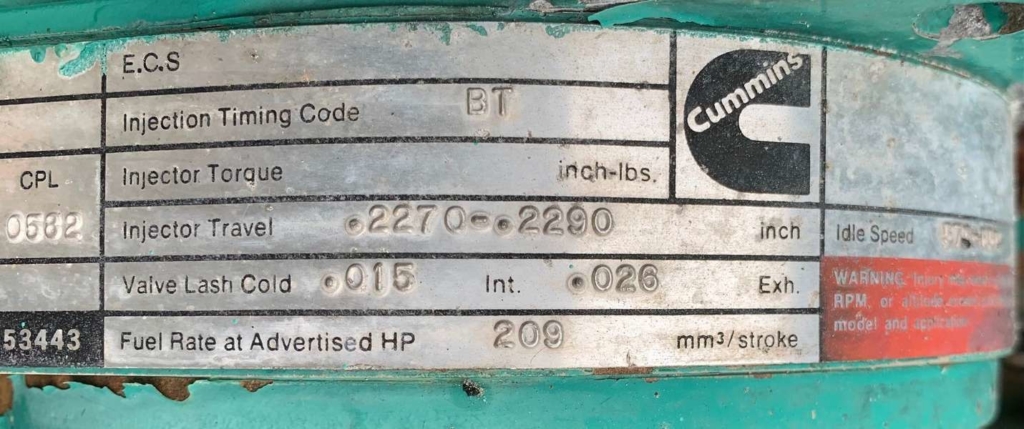
While the engine tag on a Cummins generator is often placed in a fairly visible area, in case you are unable to find it or the tag is absent, Cummins Customer Assistance can prove to be of help.
Here’s what you will usually find on a Cummins Engine Tag –
- Maker Identification i.e. the contact details of the manufacturer and the supplier.
- Engine Identifier i.e. the make and the model of the engine
- Engine Specifications which will include the Brake Horsepower, the Engine Torque, the Control Parts List (CPL), Information on Engine Hardware, complete with the date of manufacturing of the product.
- Displacement and Aspiration including information Engine Dislodging or Uprooting, as well as Turbocharge Framework.
- Fuel and Emissions including information on Pressure Ratio as well as the Fuel System.
- Emanation Certification
Caterpillar Engine Tags
While the engine tag on a Caterpillar generator is often placed in a fairly visible area, in case you are unable to find it or the tag is absent, Caterpillar Maintenance and Support can prove to be of help.
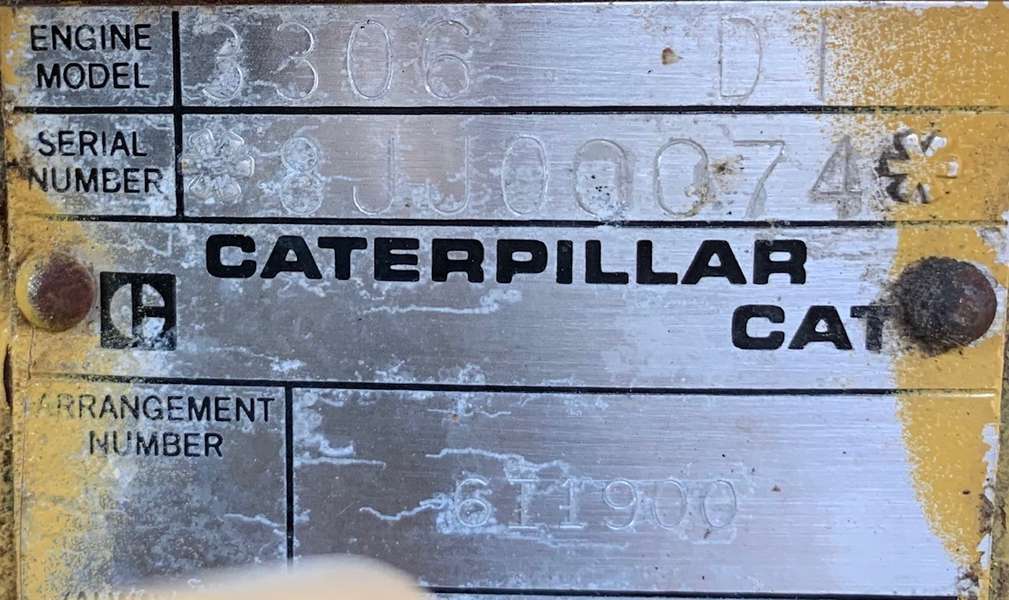
Here’s what you will usually find on a Cummins Engine Tag –
- Demonstrate Number i.e. the model number of the generator
- Producer Information i.e. Caterpillar’s brand name and contact information
- Item Identification Number i.e. a long number, the first half of which gives detail of the engine, while the second half indicates the assembling segment. This number comes in handy when any administrative assistance is required, or the technician needs certain replacement parts.
- Maker Location i.e. the information pertaining to the local supplier as well as assembling area data.
Power Generation Tags
This label is meant to reveal information related to the power generating capabilities of the generator, which can often be understood via three distinct parameters including Kilowatts. Kilovolt-Amperes and Power Factor. These are defined as follows
- Kilowatts (kW) is the measuring unit for the real electric power offered by the generator, which can be directly used to power the various appliances and equipment on the premises.
- Kilovolt-amperes (kVA) is the measuring unit for the apparent power provided by the generator. Essentially kVA comprises both – the real power (kW), as well as reactive power (kVAR), wherein the reactive power is the power drawn by devices such as motors and transformers. Unlike real power, reactive power is not consumed but is instead cycled between the power source and the load.
- Power factor can be defined as the ratio between the real power and the apparent power. For instance, if a building consumes 1600 kW and 2000 kVA, the power factor will amount to 0.80 or 80%.
To better understand the information provided by engine tags, let us take a quick look at the tags of two leading generator manufacturers – Cummins and Caterpillar!
Cummins Power Generation Tags
Here’s what you will usually find on a Cummins Power Generation Tag –
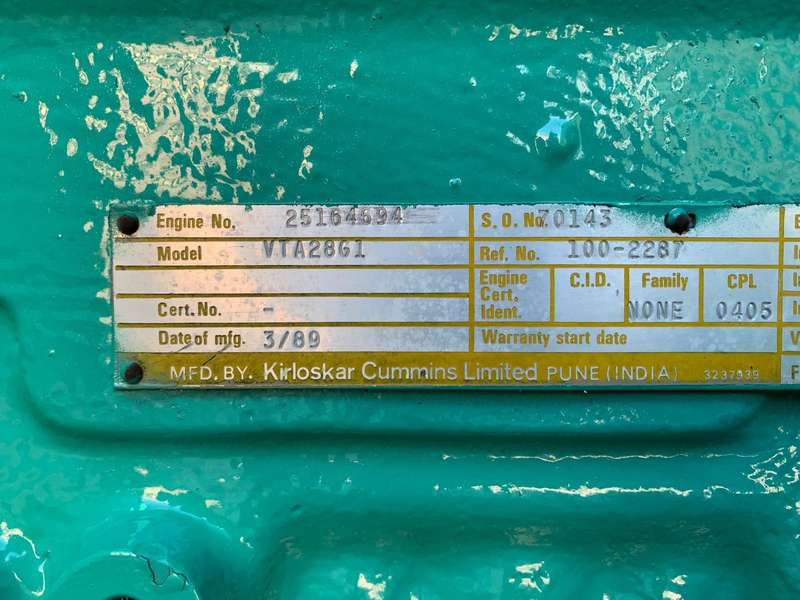
- Battery bank required for generator set application
- Generator pivoting speed
- Generator standby power source
- Generator Specifications in terms of frequency
- The yield of the Generator including kW, kVA as well as Power Factor
- Producer Information including fabricate area, generator model, and serial number.
- Association data including VOLTS and AMPS segments.
Caterpillar Power Generation Tags
Here’s what you will usually find on a Caterpillar Power Generation Tag –
- Name and description of the producer
- Engine model and make
- The yield of the Generator including kW, kVA as well as Power Factor
- Generator standby power source
- Generator supply capacity information
- Generator pivoting speed
- Most extreme operating temperature
- Windings protection information
- Generator serial number for requesting parts.
Contact us for any query related to Labels & data tags
Alert Labels
These labels help the generator experts and technicians identify the parts and procedures, which when not dealt with appropriately may harm the generator set or any related gear. Some of the most commonly found alert labels include –
- Programmed Start; usually set at doors leading to the areas where areas educating of programmed begin or assent.
- Support Required; generally used to indicate the upkeep prerequisites and investigation necessities that may be soon required. Once finished, the label is then changed.
- Crisis Generator; usually located on the outskirts of the area or the way leading to the generator room.
Cautioning/Danger Labels/Generator Nameplate
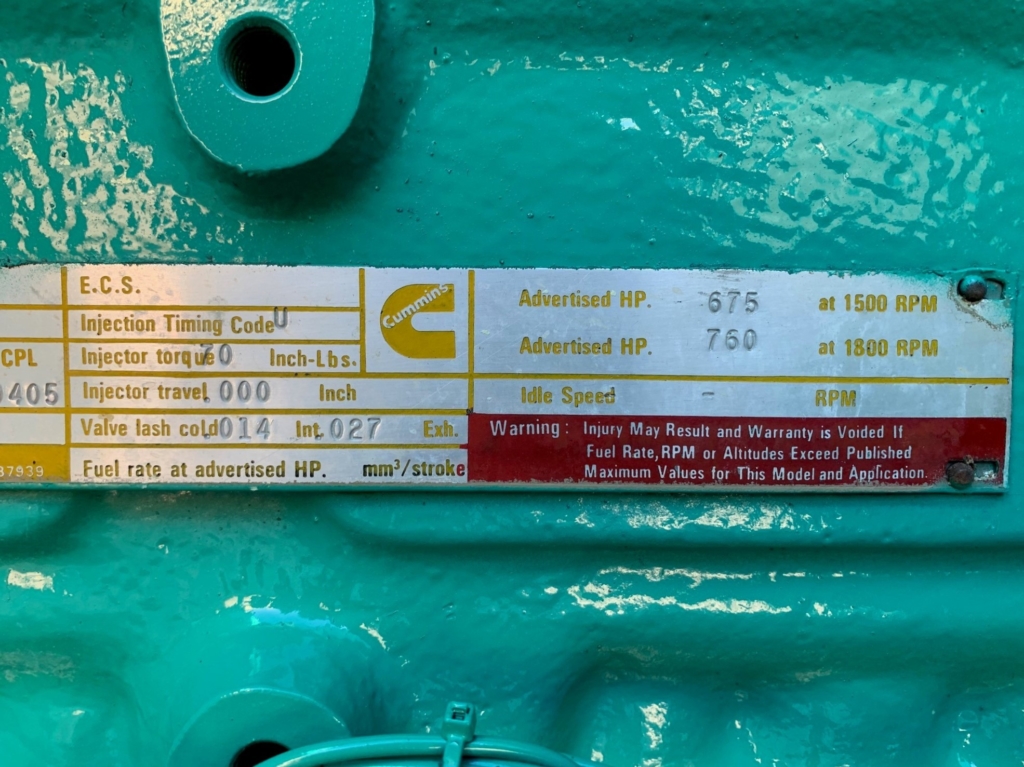
As can be understood, it is essential to follow the warning and danger labels, lest it may lead to genuine damage not only to the generator but to the handling personnel as well.
Some of the most commonly found cautioning labels include
- Power Source Peril Name
- Circular Segment Flash/Shock Notices
- High Voltage
- Carbon Monoxide
We hope that you are now aware of some of the most prominent types of generator labels, and what is indicated by each one of them. When you purchase a new or used generator from Swift Equipment, you can always rest assured of finding each of the aforementioned labels in their designated place. This will enable your service technicians to do a much better job when it comes to the testing and maintenance of your commercial generators!
Generator Labels and Data Tags FAQs
What Is a Data Plate on a Generator?
On the completion of building and testing a generator, the generator manufacturer attaches a data tag to the machine also known as a data plate, which is indicative of all the generator information. Based on this information, a technician can choose the appropriate technical manual for testing, maintenance, and troubleshooting of the generator.
How Can You Tell How Old a Generator Is?
The generator tag or the engine tag is the easiest way to find the year of manufacture of the generator. This tag comprises both – the engine serial number and the frame serial number, which indicate the year of making of the engine and of the frame, respectively.


Leave A Comment